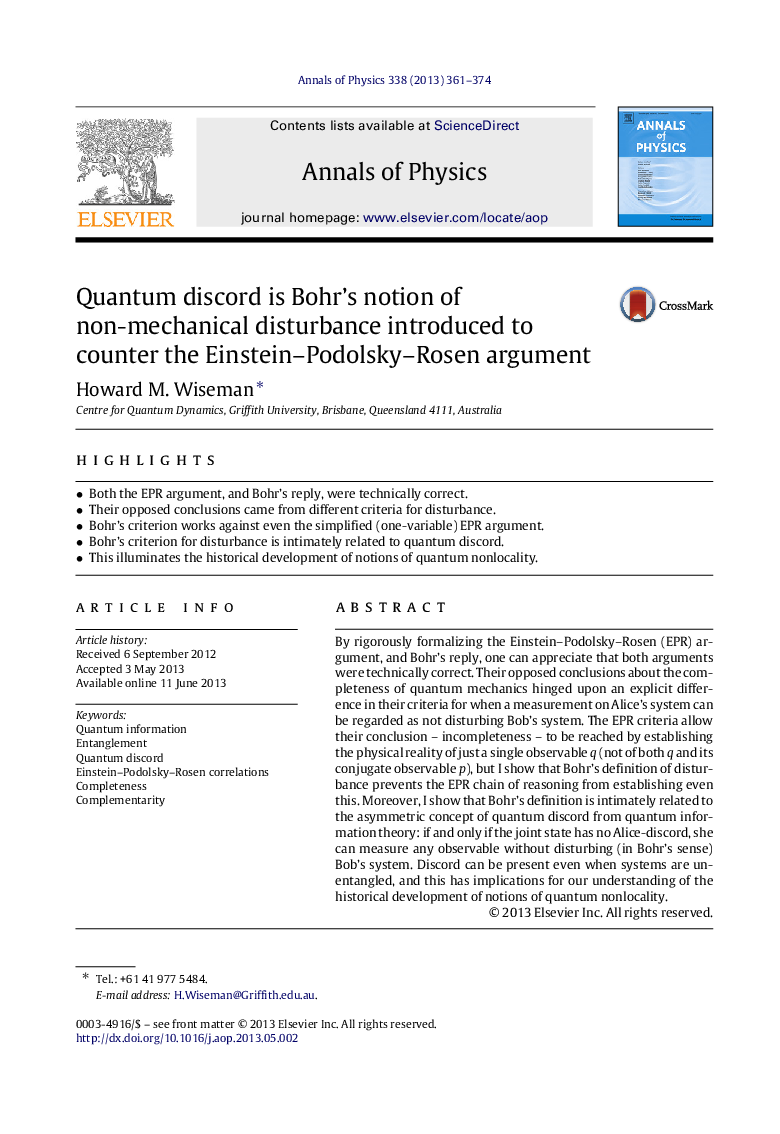| Article ID | Journal | Published Year | Pages | File Type |
|---|---|---|---|---|
| 1857432 | Annals of Physics | 2013 | 14 Pages |
•Both the EPR argument, and Bohr’s reply, were technically correct.•Their opposed conclusions came from different criteria for disturbance.•Bohr’s criterion works against even the simplified (one-variable) EPR argument.•Bohr’s criterion for disturbance is intimately related to quantum discord.•This illuminates the historical development of notions of quantum nonlocality.
By rigorously formalizing the Einstein–Podolsky–Rosen (EPR) argument, and Bohr’s reply, one can appreciate that both arguments were technically correct. Their opposed conclusions about the completeness of quantum mechanics hinged upon an explicit difference in their criteria for when a measurement on Alice’s system can be regarded as not disturbing Bob’s system. The EPR criteria allow their conclusion–incompleteness–to be reached by establishing the physical reality of just a single observable qq (not of both qq and its conjugate observable pp), but I show that Bohr’s definition of disturbance prevents the EPR chain of reasoning from establishing even this. Moreover, I show that Bohr’s definition is intimately related to the asymmetric concept of quantum discord from quantum information theory: if and only if the joint state has no Alice-discord, she can measure any observable without disturbing (in Bohr’s sense) Bob’s system. Discord can be present even when systems are unentangled, and this has implications for our understanding of the historical development of notions of quantum nonlocality.
